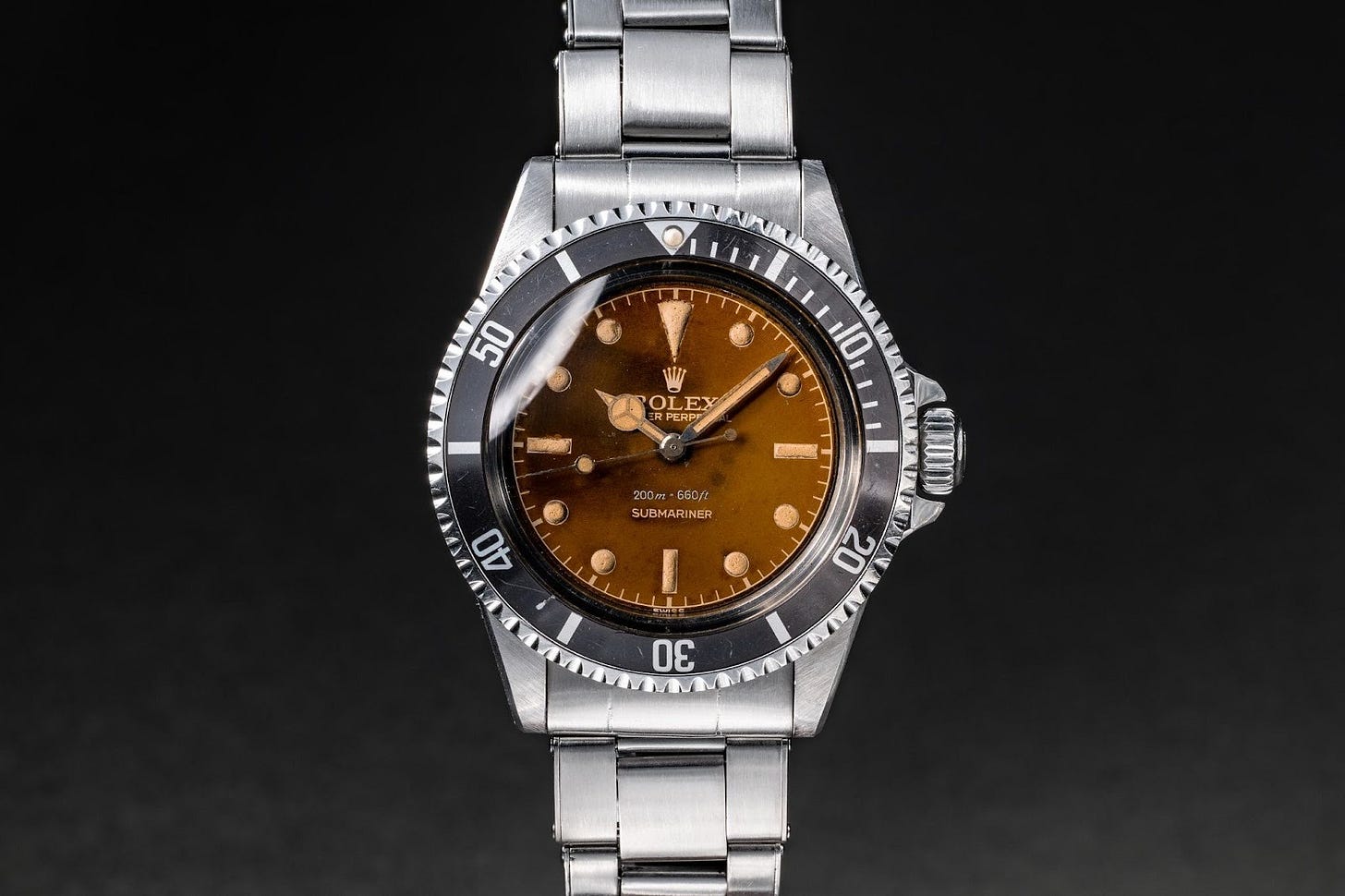John Peabody | November 11, 2025
The Vintage Watch Dial Edition
On enthusiast lexicons, ghost hands, and honey lumes.
Stop bending your business to fit someone else’s software.
Aboard builds custom business apps—CRMs, inventory systems, project trackers—that work exactly how you do. AI prototypes your solution in minutes. Expert engineers perfect it in weeks. Custom software without the custom timeline or cost.
John Peabody (JP) is a friend of WITI. He is currently Director of Content Strategy at the Aspen Institute and the writer of NESS, a newsletter all about creativity and making great content.

John here. Tropical Dial. Spider Dial. Stardust Dial. Ghost Bezel. These are just a few terms watch collectors use to describe how certain watches have aged, essentially giving poetic form to corrosion, fading, and breakdown.
There’s also Chocolate Dial, Ghost Hands, Creamy Lume, and Honey Lume. All of these fit under the larger umbrella of patina, which is itself a bit of a euphemism for decay, or even just a product flaw.
Few, if any, product categories that I know have created such an elaborate lexicon as watches.
Why is this interesting?
Can you imagine an old car with a faded paint job being described as tropical? As if that were desirable? As if it added value? Sure, you have barn finds and original patina, but the watch world has given birth to a glossary of terms so specific and focused it’s worth a closer look.
In the watch-collecting universe (and it’s almost overwhelming for Rolex watches especially), tropical refers to a black dial that has faded to brown from the intrusion of natural elements like humidity. The ghost bezel? A faded bezel, usually on a Rolex Submariner, that’s morphed from the original black to grey. And the spider dial? The face of a watch with tiny hairline fractures in the pattern of a spider web, again, most likely on a Rolex.
Because of the deep brand affinity for Rolex, what might be considered a design flaw in almost any other watch is turned into poetry and celebrated. The individuality of the piece, created by randomness and time, is what makes it desirable.
And it has to be real. Brands that flirt too closely with artificially aging their products — making new watches look old with creamy lume and faded dials — are accused of having faux patina, or fauxtina.
Sure, these terms are appreciated by collectors, but how much of that appreciation is driven by secondary market sellers? Hard to say. Watch collectors are an obsessive bunch, naturally inclined to fetishize individual characteristics of watches down to the most minute details (see Rail Dial, Swiss Only Dial, Meters First, Open 6, and so many others for the Rolex Submariner). What other industries might try to polish away, watch collectors have learned to name, celebrate, and even monetize.
As you can imagine, beyond patina descriptors, the greater watch-collecting lexicon runs deep. On Chains references a watch on a metal bracelet. A Panda Dial is a certain chronograph with a black and white design on its face. Pump Pushers describe a specific style of button on the side of a watch case. The list goes on — a growing vocabulary that gives individuality and monetary value to a sea of products, all of which do the same thing: tell time. (JP)
See Also:
